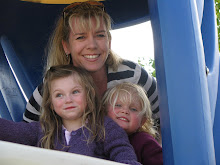I've asked the writers and readers in my Yahoo Publisher's Group on what types of reads they were most interested in. Short, "quickies" if you will - fulfilling stories you can read in 10 minutes or less (frankly, for the mother of toddlers, this is an awesome idea).
Personally, and the general consensus is - that the full length novel is still our over-arching favorite. To read and to write. But in either case, you must give way to plot. A conceivable, believable plot that will draw your readers in from sentence #1, and keep them turning pages late into the night.
If you're like me, you have a trunk full of stories that you've been writing since you could hold a pencil. Most of them are unfinished. Un-plotted. Written by a plotter who was writing like a pantster.
Okay - what's the difference? A plotter knows basically where the story is headed. A pantster writes "by the seat of their pants" - giving life to their characters and letting them go and do as they will.
Writing like a pantster for the past two weeks, working on a short, has been an excellent exercise for me. Allowing my organized self to just let it go and see what happens. Of course, once the bones are there, then the plotter goes back in, fills the holes, revamps the ending, and ties up all loose ends in a nice, neat little bow. We'll see if the latest submission has any merit soon. Hopefully. Perhaps what I've written is actually a first chapter and not a short story, as one of my writer friends mentioned. Aye yai yai. Too late now.
So, with regards to plot - here is what I do when laying one out:
- Pour a cup of coffee
- Pick up a yellow note pad
- Write a quick scene, off the top of my head, introducing me to the hero or heroine I've been chewing on (if no one particular is in mind, I'll add someone into the scene and ask them who they are...)
- When the mind clicks, (authors, you know what I mean), I give the hero/heroine a problem, and then introduce them to each other. Do they like each other? Have they ever met before?
- Write out the storyline for the two to solve their problem together.
If all of the above clicks, you have a story to write through to fruition. If none of the above works, it's back to step 1 tomorrow.
Now - though I'm a plotter, I'm vicious with my stories. I am known to hack my darlings to pieces if I don't believe what they're up to. Often, I'm surprised by what happens. I mourn when someone dies. I laugh with them, cry with them, and lose myself - much to my family's chagrin. Even Rachel now "writes books" at her little student's desk in my office, telling me, "Mommy, read what I've written here!" - okay, voices from MY past - I did the same thing to my mommy. Ha.
If they aren't going anywhere, back in the WIP pile they go. I flip flop from story to story until I fall in love and can't let go. Historical Romances are slightly different, as my plotting process depends a great deal on historical events, research, and finding believable voices and points of view.
I would LOVE to hear your plotting schemes - how your story arch comes into play. Feel free to comment!
Have a blessed day!
~Ashley









Ashley, I started off as a panster, but when that didn't seem to be working, I decided I had to learn how to plot. I tried a variety of different methods, but the one I swear by now is a book called, 'First Draft in 30 Days' by Karen S. Weisner. I follow the book and by the end I go from basic idea to a detailed plot. I even use it for short story ideas now.
ReplyDeleteNo more extensive revisions. Working out the plot in advance keeps me from falling off track.
Ashley, when I started writing, I was a panster, but decided for novel-length stories, I needed to learn how to plot.
ReplyDeleteI tried a lot of different methods, but the one I like is a book called, 'First Draft in 30 Days' by Karen S. Wiesner.
I just follow the lessons and end up with a detailed plot. Since using this method, I've done away with extensive revisions. A real time saver.
Hello, Ashley--not sure I "know" you, but I am a fellow Wild Rose Press Western historical novelist. But I don't write Inspirational--have to get a few curse words and drinking and sex in there, I suppose. I love the premise of your new plot. Anything Western (Texas for me) is intriging. Plotting, for me, is basically a no-go. I can look ahead Maybe two or three chapters, but I can't see everthing to make an outline or anything else. I am "panster" deluxe--I begin with characters--out of thin air--and begin. It's such fun to see what what my hero and heroine will do!
ReplyDeleteCelia Yeary www.celiayeary.com
Celia - love what you say here -feel the same way about westerns. :) Looking forward to digging into your stories... I have some books to buy/download!
ReplyDeleteAsh
Susan - I'm buying that book today... and I'm going to put it to good use. I do Nanowrimo in November - another month where nothing gets done at my house! ;)
ReplyDelete